The history of China is extensive and profound, and the 5,000-year civilization has created the current glorious history. Among the cultural treasures of our Chinese nation, architecture also has a very long history. Today, let’s take a look at the top ten masterpieces of ancient Chinese architecture.
1. Beijing Forbidden City
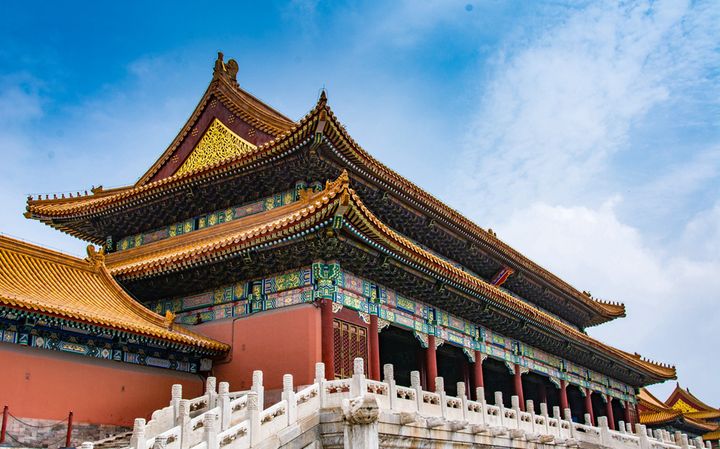
The Forbidden City in Beijing is the royal palace of the Ming and Qing dynasties in China. It used to be called the Forbidden City and is located in the center of the central axis of Beijing. The Forbidden City in Beijing is centered on three main halls, covering an area of about 720,000 square meters, with a construction area of about 150,000 square meters. There are more than 70 palaces of different sizes and more than 9,000 houses.
The Beijing Forbidden City began construction in the fourth year of Yongle (1406), Emperor Chengzu of the Ming Dynasty. It was built on the basis of the Nanjing Forbidden City. It was completed in the eighteenth year of Yongle (1420) and became the palace of 24 emperors in the Ming and Qing dynasties. On the National Day of the 14th year of the Republic of China (October 10, 1925), the Palace Museum was officially established and opened. The Forbidden City in Beijing is 961 meters long from north to south and 753 meters wide from east to west. It is surrounded by 10-meter-high walls and a 52-meter-wide moat outside the city. There are four gates in the Forbidden City, the Meridian Gate in the south, the Shenwu Gate in the north, the Donghua Gate in the east and the Xihua Gate in the west. Each of the four corners of the city wall has a graceful turret. There is a folk saying that there are nine beams, eighteen pillars and seventy-two ridges, which describe the complexity of its structure.
The buildings in the Forbidden City in Beijing are divided into two parts: the outer court and the inner court. The center of the Outer Dynasty is the Hall of Supreme Harmony, the Hall of Central Harmony, and the Hall of Preserving Harmony, collectively referred to as the Three Great Halls, where the state holds grand ceremonies. The left and right wings of the three halls are supplemented by two groups of buildings, the Wenhua Hall and the Wuying Hall. The center of the inner court is Qianqing Palace, Jiaotai Palace, and Kunning Palace, collectively referred to as the Housan Palace, which is the main palace where the emperor and empress live. Then there is the Royal Garden. On both sides of the Housan Palace are the East and West Sixth Palaces, which are the places where the concubines live and rest. On the east side of the East Sixth Palace is the Tianqiong Palace and other Buddhist temple buildings, and on the west side of the West Sixth Palace is the Zhongzheng Hall and other Buddhist temple buildings. In addition to the Outer Dynasty and the Inner Court, there are two parts of the Outer East Road and the Outer West Road.
2. Potala Palace
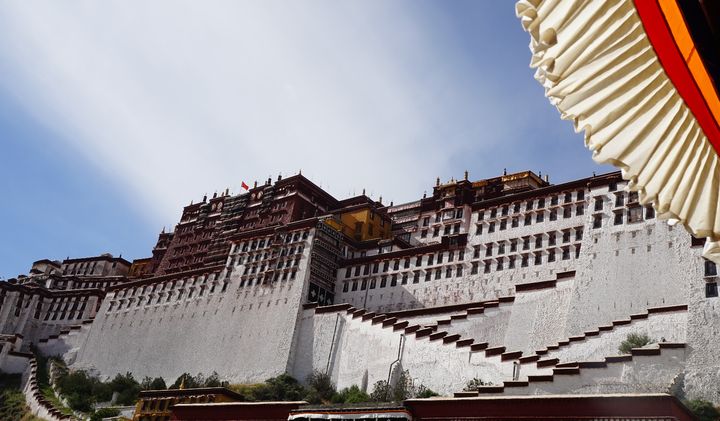
The Potala Palace is located on the Maburi Mountain in the northwest of Lhasa, the capital of the Tibet Autonomous Region of China. It is said that it was built as the palace of Songtsan Gampo after he moved his capital to Lhasa. After being rebuilt in the 17th century, it became the residence of the winter palace of the Dalai Lamas and the center of theocratic rule in Tibet. In 1961, the Potala Palace became one of the first batch of national key cultural relics protection units under the State Council of the People’s Republic of China. In 1994, the Potala Palace was listed as a world cultural heritage. The main buildings of the Potala Palace are the White House and the Red Palace.
The whole palace has a Tibetan style, is more than 200 meters high, and has 13 floors on the outside, but only 9 floors in reality. Because it was built on the mountainside, the large area of stone walls stands like a cliff, making the building seem to be integrated with the hills, majestic.
3. Summer Palace
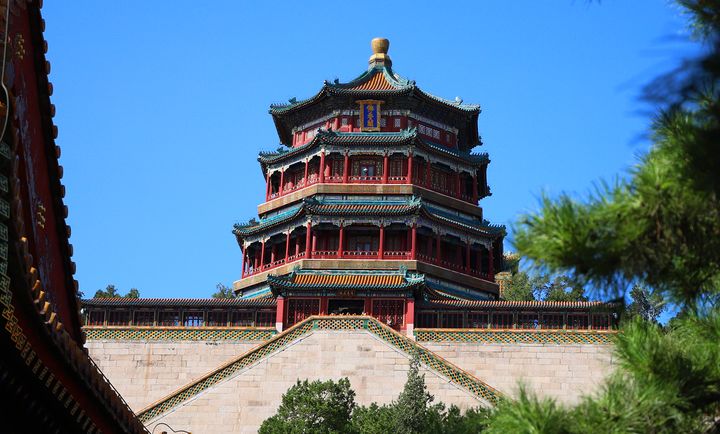
The Summer Palace, the imperial garden of the Qing Dynasty in China, formerly known as Qingyi Garden, is located in the western suburbs of Beijing, 15 kilometers away from the urban area. three thirds. Adjacent to Yuanmingyuan. It is a large-scale landscape garden built on the basis of Kunming Lake and Wanshou Mountain, modeled on Hangzhou West Lake, and drawing on the design techniques of Jiangnan gardens. It is also the most complete preserved royal palace and royal garden, known as the “Royal Garden Museum”. .
Before Emperor Qianlong of the Qing Dynasty succeeded to the throne, four large royal gardens were built in the western suburbs of Beijing. In the fifteenth year of Qianlong (1750), Emperor Qianlong used 4.48 million taels of silver to honor his mother, the Empress Dowager Chongqing, to rebuild Qingyi Garden here, forming a 20-kilometer royal garden area from the current Qinghua Garden to Xiangshan. In the tenth year of Xianfeng (1860), Qingyi Garden was burned down by the British and French allied forces. It was rebuilt in the 14th year of Guangxu (1888), renamed the Summer Palace, and used as a summer playground. In the twenty-sixth year of Guangxu (1900), the Summer Palace was destroyed by the “Eight-Power Allied Forces” again, and all the treasures were looted. After the fall of the Qing Dynasty, the Summer Palace was destroyed again during the warlord melee and the Kuomintang rule.
On March 4, 1961, the Summer Palace was announced as one of the first batch of national key cultural relics protection units. Together with Chengde Summer Resort, Humble Administrator’s Garden and Lingering Garden, it was also known as China’s Four Famous Gardens. It was listed in November 1998. “World Heritage List”. On May 8, 2007, the Summer Palace was officially approved by the National Tourism Administration as a national 5A-level tourist attraction. In 2009, the Summer Palace was selected as the largest existing royal garden in China by the China World Records Association.
4. Yongle Palace
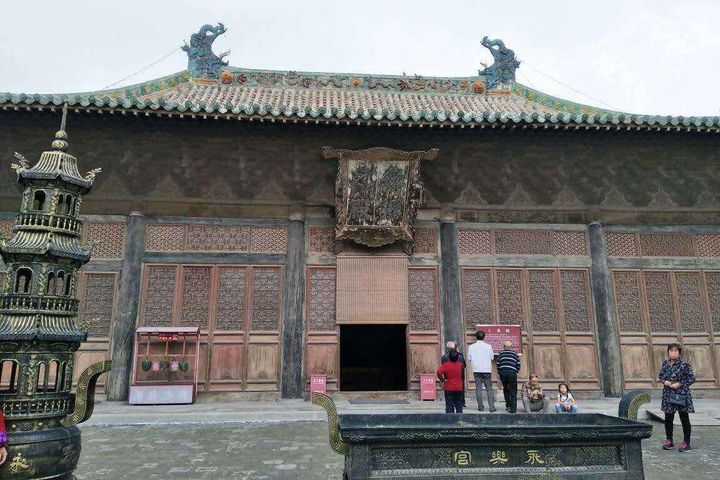
Yongle Palace, formerly known as Dachunyang Longevity Palace, was built to commemorate Lu Dongbin, one of the Eight Immortals. Because it is located in Yongle Town, it is commonly known as Yongle Palace. It is one of the first batch of key cultural relics protection units in the country.
Founded between 1247 and 1358, Yongle Palace is the largest and best-preserved Taoist temple in China. Together with Baiyun Temple in Beijing and Chongyang Palace in Huyi District, Shaanxi, it is also known as the Three Great Ancestral Courts of Quanzhen Taoism.
5. Mausoleum of the First Qin Emperor
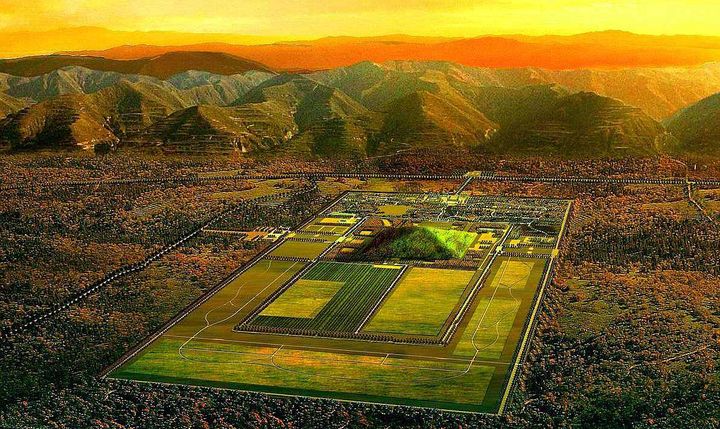
Mausoleum of Qinshihuang, the mausoleum of Yingzheng (259-210 BC), the first emperor in Chinese history, the first batch of world cultural heritage in China, the first batch of national key cultural relics protection units, and a national AAAAA-level tourist attraction, located in Xi’an, Shaanxi Province It is located at the northern foot of Lishan Mountain, 5 kilometers east of Lintong District.
The Mausoleum of Qin Shihuang was built in the first year of Qin Wangzheng (247 BC) and completed in the second year of Qin II (208 BC). It lasted 39 years and is the first large-scale and well-designed imperial mausoleum in Chinese history. There are two layers of rammed earth walls inside and outside, symbolizing the imperial city and palace city of Xianyang, the imperial capital. The mausoleum is located in the south of the inner city and is in the shape of a bucket. It is 51 meters high and the circumference of the bottom is more than 1,700 meters. According to historical records, there are also various palaces built in the Qin Mausoleum, displaying many strange treasures. There are a large number of burial pits and tombs of different shapes and connotations around the Qin Mausoleum. More than 400 of them have been proven, including the Terracotta Warriors and Horses Pit in the “Eighth Wonder of the World”. Qinshihuang Mausoleum is one of the largest imperial tombs in the world, with the most peculiar structure and the richest connotations. It fully demonstrates the artistic talent of the working people of the Han nationality in ancient China more than 2,000 years ago, and is the pride and precious wealth of the Chinese nation. [2]
On March 4, 1961, the Mausoleum of Qin Shihuang was announced by the State Council as the first batch of national key cultural relics protection units [3] . In December 1987, the Mausoleum of the First Qin Emperor and the Pit of Terracotta Warriors and Horses were approved by UNESCO to be included in the World Heritage List.
6. Qianling
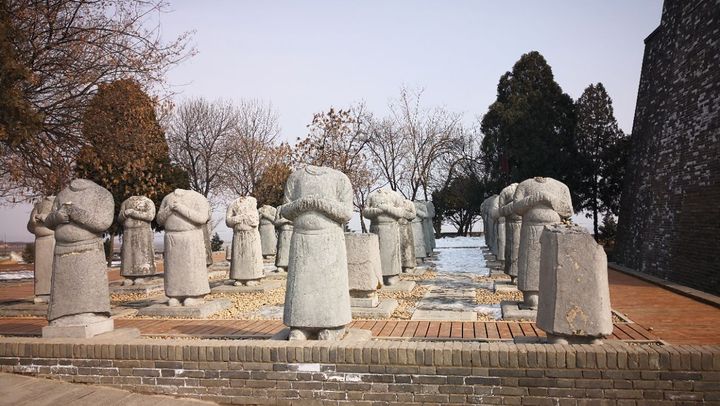
Qianling Mausoleum is one of the Eighteen Tombs of the Tang Dynasty in the Guanzhong area of Shaanxi Province. It is located in the northern part of Qianxian County, Xianyang City, Shaanxi Province, on Liangshan Mountain, 6 kilometers away from the county seat. It is the joint burial tomb of Emperor Gaozong Li Zhi and Wu Zetian. The scale of the cemetery is large, and the area of the mausoleum covers an area of “eighty miles in a week” (“Tang Huiyao”). The cemetery has two inner and outer walls, of which the north and south walls of the inner city are 1450 meters long, the east city wall is 1583 meters long, and the west city wall is 1438 meters long, with a total area of nearly 2.4 million square meters.
The Qianling Mausoleum was built in the first year of Tang Guangzhai (684), and was added in the second year of Shenlong (706). In addition to the main tomb, there are seventeen small accompanying tombs in Qianling Mausoleum, in which other members of the royal family and meritorious officials are buried.
Qianling Mausoleum is the best-preserved main tomb among the Eighteen Tombs of the Tang Dynasty, and it is also the only one among the Tang Tombs that has not been stolen. On March 4, 1961, Qianling Mausoleum was announced by the State Council as the first batch of national key cultural relics protection units.
7. Zhaozhou Bridge
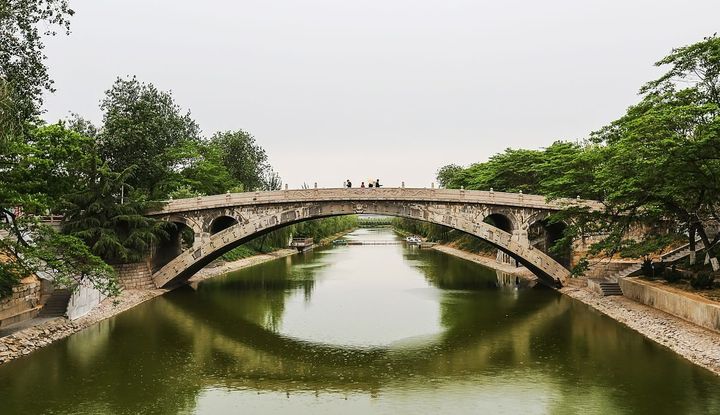
Zhaozhou Bridge is a stone arch bridge located on the South River in Zhao County, Shijiazhuang City, Hebei Province. It was named after Zhao County was called Zhaozhou in ancient times. The locals call it the Big Stone Bridge to distinguish it from the Yongtong Bridge (Little Stone Bridge) outside the west gate of the city. Zhaozhou Bridge was first built in the Sui Dynasty, designed and built by craftsman Li Chun, and later named Anji Bridge by Song Zhezong Zhao Xu, and took it as the correct name.
Zhaozhou Bridge is the world’s oldest, largest span, and best-preserved single-hole open-shouldered stone arch bridge with open shoulders. Its construction technology is unique. Value; the carving knife is vigorous and powerful, and the artistic style is novel and unrestrained, showing the vigorous, rigorous and elegant stone carving style of the Sui Dynasty. The carvings on the bridge body are finely carved, which has high artistic value. Zhaozhou Bridge occupies an important position in the history of bridge building in China and has a profound influence on future generations of bridge construction all over the world.
On March 4, 1961, Anji Bridge (Dashi Bridge) was announced by the State Council of the People’s Republic of China as the first batch of national key cultural relics protection units. [4] In 2010, Zhaozhou Bridge Scenic Spot was rated as a national AAAA tourist attraction.
8. Yellow Crane Tower
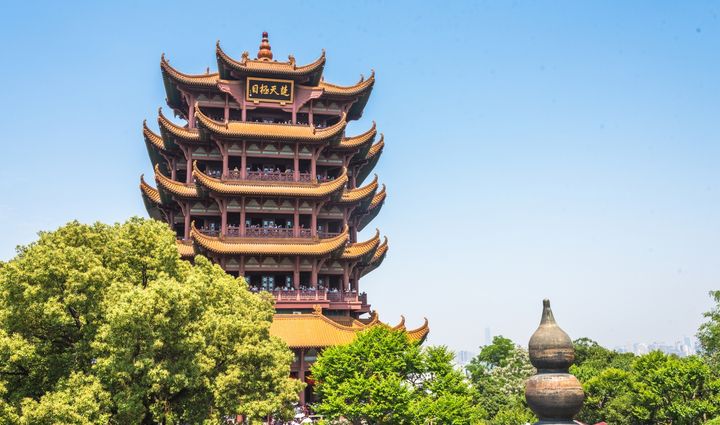
The Yellow Crane Tower is located in Wuchang District, Wuhan City, Hubei Province. It is located on the top of Snake Mountain and is on the verge of the Yangtze River. It is a landmark building in Wuhan. “Tongzhi Tower” was designed as a prototype and rebuilt in 1985. It became famous all over the world because of the poem “Yellow Crane Tower” written by Tang Dynasty poet Cui Hao Denglou. Since ancient times, it has been known as “the most beautiful scenery in the world”. It is also known as the “three famous scenic spots in Wuhan” together with Qingchuan Pavilion and Guqin Terrace. It is the first of the “Scenery”, one of the “Four Famous Buildings in Ancient China”, and one of the “Top Ten Famous Historical and Cultural Buildings in China”. It is known as “the first building in the world”.
The main building of the Yellow Crane Tower is an octagonal body with four sides and a reinforced concrete frame imitating wood structure. Supported by 72 columns, there are 60 corners extending outward on the upper floor; outside the building, there are cast copper yellow crane shapes, Shengxiang pagodas, archways, porch, pavilions and other buildings, and the whole building is shaped like a yellow crane, spreading its wings to fly There are plaques hanging on all sides under the eaves, and a golden plaque with three characters “Yellow Crane Tower” inscribed by calligrapher Shu Tong on the front.
9. Yueyang Tower
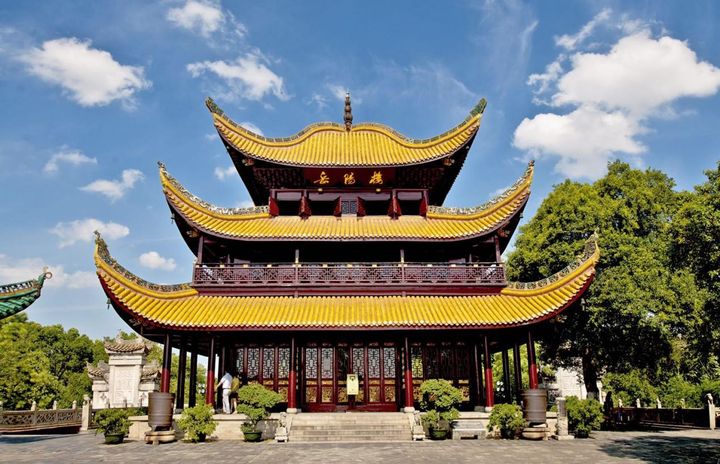
Yueyang Tower is located on Dongting North Road, Yueyanglou District, Yueyang City, Hunan Province. It is located on the west gate wall of the ancient city of Yueyang, close to the Dongting Lake, overlooking Dongting and Junshan in front. It was built in the 20th year of Jian’an in the Eastern Han Dynasty (215) The existing building follows the shape and layout of the reconstruction in the sixth year of Guangxu (1880) in the Qing Dynasty. Because Teng Zongliang of the Northern Song Dynasty rebuilt Yueyang Tower, he invited his friend Fan Zhongyan to write “The Story of Yueyang Tower”, which made Yueyang Tower famous all over the world. Since ancient times, it has been known as “the water in Dongting, and the building in Yueyang”. It is also known as the “Three Famous Towers in the South of the Yangtze River” together with the Yellow Crane Tower in Wuhan, Hubei, and the Tengwang Pavilion in Nanchang, Jiangxi. First, it is known as “the first building in the world”.
The main building of Yueyang is a rectangular shape with a height of 19.42 meters, a depth of 14.54 meters and a width of 17.42 meters. , Fang, rafters, and purlins are tenoned together to form a whole; the roof is covered with glazed yellow tiles, and the structure is solemn and generous. On the first floor of Yueyang Tower, there is a carved screen of “The Story of Yueyang Tower” and poems, couplets, carvings, etc.; in the middle of the second floor, there is a carved screen of red sandalwood, on which is engraved “The Story of Yueyang Tower” written by Zhang Zhao, a calligrapher of the Qing Dynasty; on the third floor, there is a calligraphy written by Mao Zedong. The carved screen of Du Fu’s “Climbing Yueyang Tower” poems, and the couplet “Chang Geng Li Baishu” hanging on the eaves pillars “the water and the sky are the same color, the wind and the moon are boundless”, which have certain ornamental value. Yueyang Tower is the only ancient building that maintains its original structure among the three famous buildings. The unique helmet top structure reflects the wisdom of the ancient working people and the exquisite design skills of skilled craftsmen.
10. Songyue Temple Pagoda
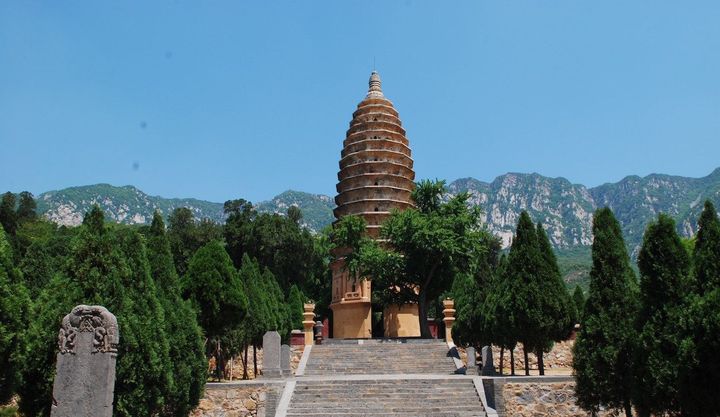
Songyue Temple Pagoda, located in Songyue Temple at the southern foot of Songshan Mountain in Dengfeng City, Zhengzhou City, Henan Province, is a Buddhist pagoda in the Northern Wei Dynasty, built in the Zhengguang period of the Northern Wei Dynasty (520-525).
The Pagoda of Songyue Temple is a 15-story brick pagoda with dense eaves. It is dodecagonal in plane and 37 meters high. The tower is divided into upper and lower parts. On the east, west, south and north sides of the upper part, there are gates leading to the ventricle of the tower. The lower part is vertical up and down, without any decoration on the outer wall. On the top of the tower are 15 layers of overlapping dense eaves, which are retracted layer by layer from bottom to top, forming a soft parabola. The Tasha is composed of a base, a lotus cover, a Xumizuo, a lotus, a phase wheel, orbs, etc. There is an underground palace under the tower. The Songyue Temple Pagoda is the earliest existing brick pagoda in China. It reflects the process of Chinese and foreign architectural cultural exchanges, integration and innovation.
On March 4, 1961, the Songyue Temple Pagoda was announced by the State Council of the People’s Republic of China as the first batch of national key cultural relics protection units [3]; “China” historical buildings are included in the world cultural heritage.